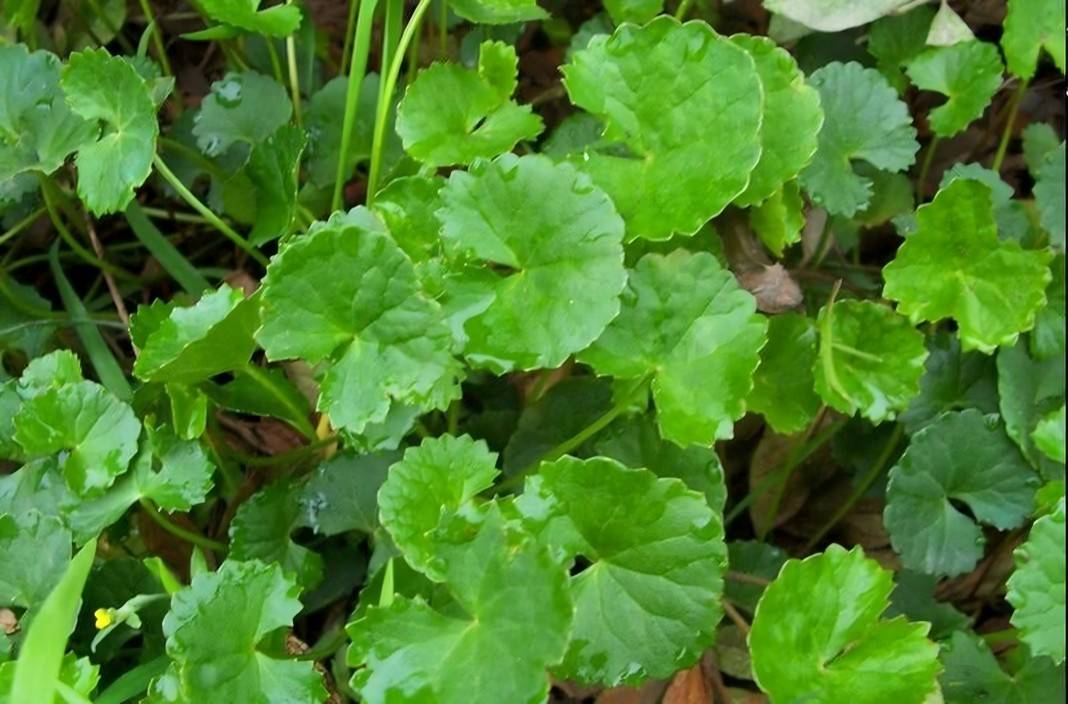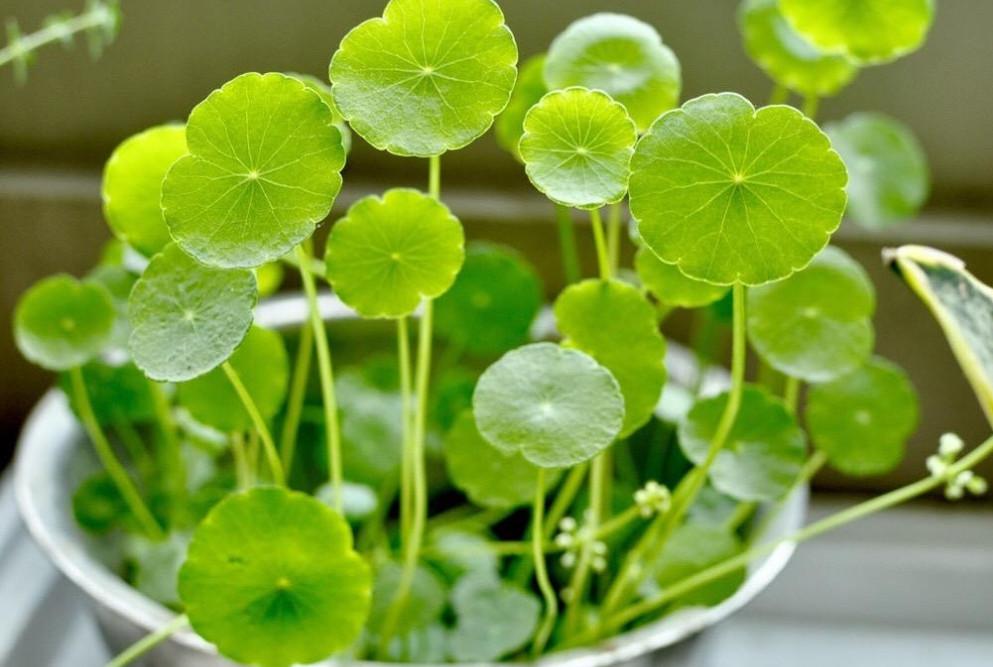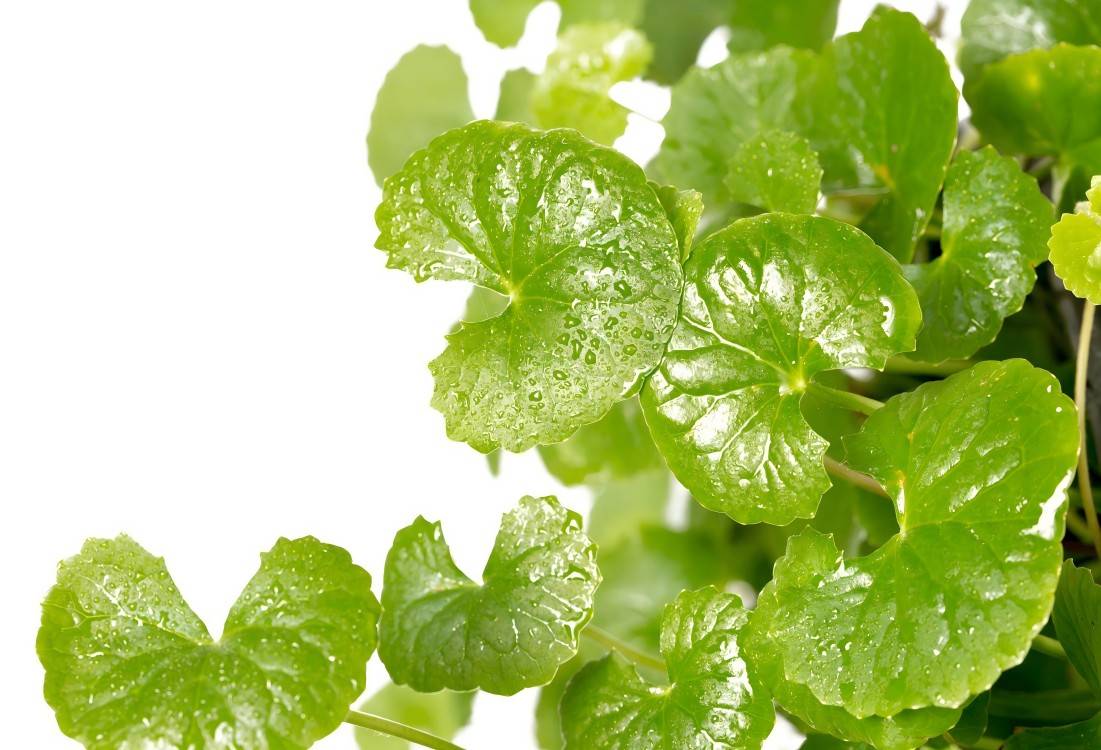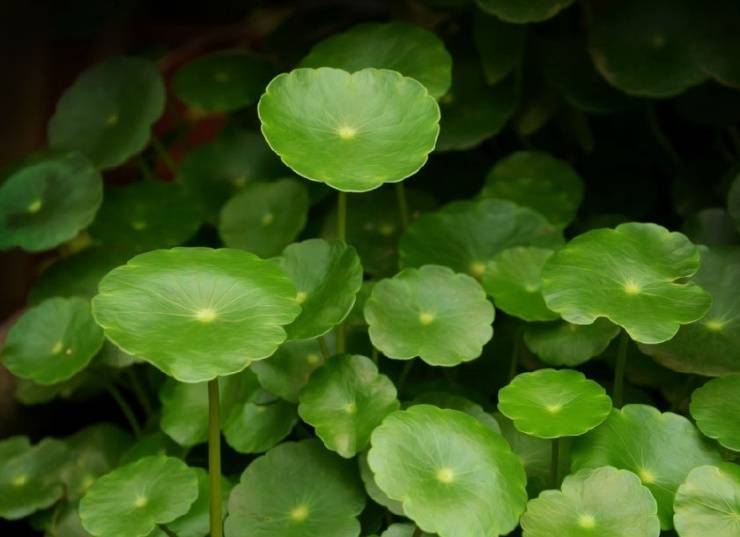What Is the Benefit of Gotu Kola in Bengali?
Centella asiatica (L.) Urban is the dried whole grass of Centella asiatica (L.) Urban of the Umbelliferae family, belonging to perennial creeping herbaceous plants, native to China, Malaysia, Indonesia, Sri Lanka, Vietnam, etc. It is also produced in South Africa, India, Madagascar, Australia and other countries. It is native to China, Malaysia, Indonesia, Sri Lanka, Vietnam, etc. It is also produced in South Africa, India, Madagascar, Australia and other countries. In China, it is mainly distributed in East China, South China, Central and Southwest China. Gotu Kola is cold in nature, and its main effects are clearing away heat and inducing dampness, detoxifying and subduing swelling, etc. It is mostly used for ulcers, lupus erythematosus, bruises, infectious hepatitis, etc. [1]. The applications of Gotu Kola are diverse, and the traditional applications are not only for medicinal use, but also widely consumed. For example, the dried leaves of Centella asiatica are used as tea in China, mostly for herbal tea [2], and the fresh leaves are used as a vegetable or juice in some countries in Southeast Asia [3]. Based on the wide range of applications of Centella asiatica, this paper summarizes the ancient Chinese literature, traditional applications, modern chemical substance basis and pharmacological effects of Centella asiatica.
1 Traditional applications and herbal records of Gotu Kola in China [4].
Gotu Kola has a long history of use as traditional Chinese medicine in China. It has been used as a traditional Chinese medicine for a long time, and there are several aliases of Centella asiatica in different parts of China (see Table I). In addition to its traditional application as a traditional Chinese medicine, it is also used as an herbal tea and therapeutic material, and its main function as a tea is to clear away heat and prevent heat stroke. The folk in the south of China often drink it as herbal tea [5], mostly called Lei Gong Gen tea, which is used to dispel wind and dampness, soothe the tendons and activate the blood, and also has the function of treating skin inflammation, enhancing the resistance of the skin epidermis, and playing a certain cosmetic role, and the folk will match the Lei Gong Gen and the white fruits with the tea, which will be used as a weight-loss tea. Centella asiatica is also commonly used as a therapeutic material [6].
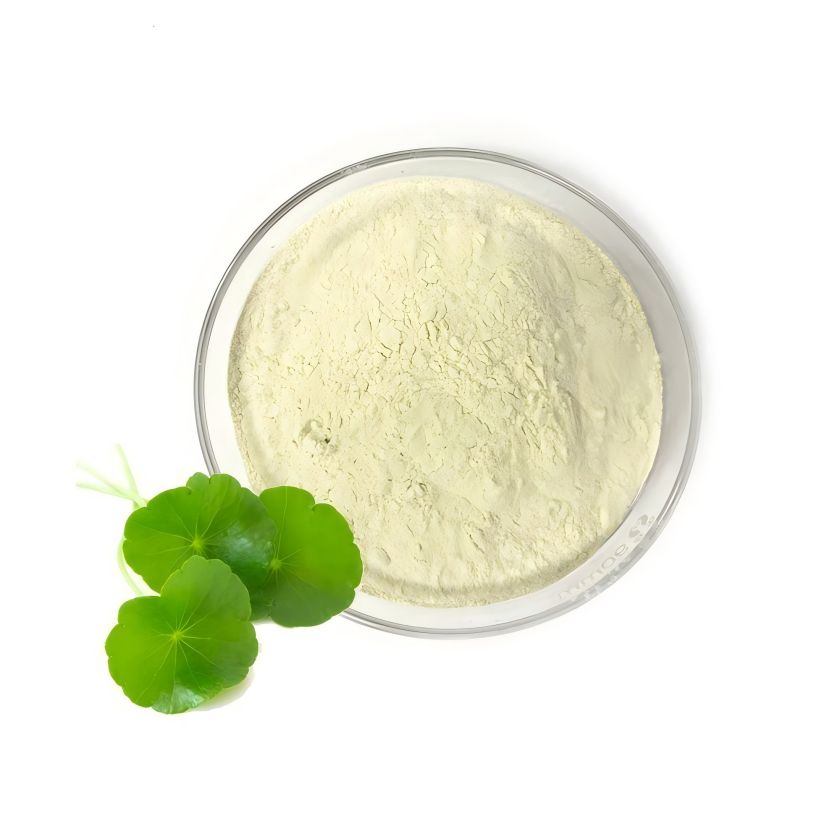
2 Traditional application in other countries
In other countries, Gotu Kola is also known as Asiatic Pennywort, Indian Pennywort, Thick-leaved Pennywort, Gotu Kola [7].
In Sri Lanka, Centella asiatica is used for the treatment of skin problems, difficult to heal wounds, etc. In India, Gotu Kola is used for the treatment of skin problems. In India, Centella asiatica is used to treat skin inflammation and is a diuretic, used in the treatment of leprosy, a tonic, rejuvenating, strengthens nerve function and memory, helps concentration, and the fresh leaves are used for treating diarrhea in children. Gotu Kola oil extract is applied externally to promote hair growth, and the fresh leaves are used as a vegetable and in salads. In Viet Nam, Centella asiatica is used as a food with green onions. It is also used as a traditional Chinese medicine in Madagascar, Sri Lanka, South Africa, India, Nepal, Southeast Asia and parts of South America. It is tender, palatable, and can be eaten raw, and is also used as a vegetable in Southeast Asia, India, Pakistan, Sri Lanka, and South America. In Thailand and India, in addition to vegetables, Centella asiatica is also used to make tonic drinks and fruit juices [7].
Based on its wide range of pharmacological effects, Gotu Kola has been included in many pharmacopoeias [8], e.g., British Herbal Pharmacopoeia, Chinese Pharmacopoeia, Dutch Pharmacopoeia, German Pharmacopoeia, Martin's Pharmacopoeia, and the German Pharmacopoeia. Pharmacopoeia, Martindale European Pharmacopoeia, Pharmacopee frangaise, La Farmacopea Italiana X [9], European Pharmacopoeia VI [10], and the European Pharmacopoeia. European Pharmacopoeia VI [10] and Polish Pharmacopoeia IX [11].
3 Modern applications
3.1 Modern clinical applications
Centella asiatica and related preparations are commonly used in the treatment of skin burns, and have good therapeutic effects. For example, Cui Wenhua [12] and others conducted a comparative clinical trial of Centella asiatica herbal burn cream, which showed that the pain relief of Centella asiatica burn cream was faster, the wound oozing was less, the healing period was shorter, and the rate of scar formation was lower, which made the therapeutic effect better than that of western medicine.
Gotu Kola is used in traditional Chinese medicine for the treatment of chronic renal failure, and has certain efficacy [1].
Clinical use of Centella as the main component of the three gold tablets for the treatment of urinary tract infections has certain advantages in terms of bacterial clearance rate, therapeutic efficiency and drug resistance [13].
In addition, Gotu Kola can be used in the prevention of colds and chronic bronchitis, and in the treatment of encephalitis B, mumps, acute jaundice hepatitis, and digestive mycobacterial diseases [14].
Asiaticoside, an extract of Gotu Kola, has a wide range of pharmacological effects and is commonly used in medicine and cosmetology. For example, the Centella asiatica cream ointment produced by Shanghai Modern Pharmaceuticals, as a prescription drug, has the effect of promoting the healing of wounds, and is used for the treatment of traumatic injuries, surgical wounds, burns, scars and scleroderma, and it is used in large quantities in clinical applications.
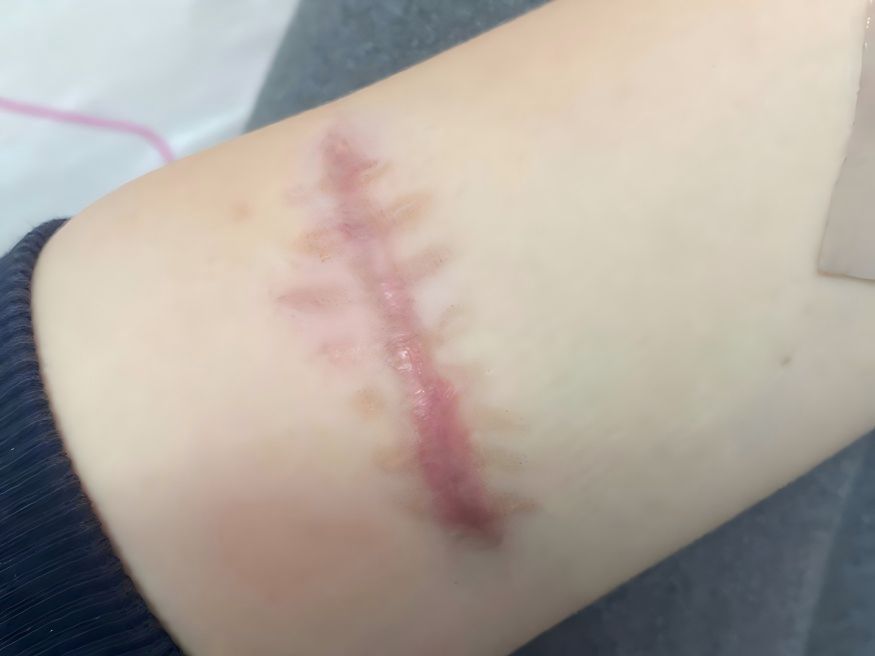
3.2 Application of Patent Application
Up to now, according to the data from the State Intellectual Property Office of China, the number of patent applications related to Centella asiatica has reached 1,592, basically all the major effects of Centella asiatica have relevant patent applications, and the application is relatively extensive. However, there are very few patent applications about Centella asiatica tea, which can strengthen the development of related product patents.
4 Modern Research
4.1 Research on active ingredients of Centella asiatica extracts
Centella asiatica extract mainly contains triterpenoids, glycosides, polyacetylenes, volatile oil, flavonoids, alkaloids and other compounds. Among them, the triterpenoids of Centella asiatica glycosides have been studied the most, and they are considered to be the main active ingredients of Centella asiatica in exerting related efficacy effects [15].
4.1.1 Triterpenes and their Glycosides
Triterpenoids are the most abundant substances in Centella asiatica, and most of them are arbutin and oleanolane-type structures. Most of them are arbutin and oleanolic structures, among which the contents of asiaticoside, hydroxyasiaticoside and asiaticoside B, which are pentacyclic triterpenoids, are relatively high [16] (see Fig. 1 for the chemical structure). Secondly, it contains a variety of glycosides [17] and free triterpenoids [1] (see Table 2 for the main glycosides and free triterpenoids).
With the deepening of related research, the chemical basis of Centella asiatica has become more and more clear, including Sclerocarpus centelloside D, Sclerocarpus centelloside E [18], Centellasaponin I, Centellasaponin J, and Sclerotin E [19], and Sclerotin E [20], Centelloside E (centellasaponin E) [19], centellasaponin G (centellasaponin G), centellasaponin H (centellasaponin H), centellasaponin F (centellasaponin F) [20] and other components are relying on the more and more advanced modern technology have been discovered and identified. and identified. The study of the chemical basis of Centella asiatica provides a reference for the application and development of new efficacy of Centella asiatica, which is of great practical value and significance.
4.1.2 Polyynes
There are relatively few studies on polyynes in Centella asiatica. In 1973, Schulte et al[21]studied and isolated a variety of polyynes, and successfully identified the structures of C16 H21 O2, C19 H27 O4, C19 H27 O4, C17 H21 O3 and C15 H20 O2. Subsequently, the structures of dotriacont-8-en-l-oic hydroxy-α-pyrone [23], 2 α , 3 α , 6 α ,11-oxoheneicosanyl-cyclohexane, acid [22], 3-isooctadecanyl-4- 3-O- [α-L- arabinopyranosyl] - 23 α-tetrhydroxyurs-12-ene-28-oic acid [24] and other polyalkynes.
4. 1. 3 Volatile oil
The volatile oil of Centella asiatica mainly contains monoterpenes, sesquiterpenes and their oxides. Sesquiterpenoids and their oxides are the ones with higher content.
Qin Luping [25] et al. analyzed that Centella asiatica contains caryophyllene, farnesol, elemene, longifolene, copaene and other major volatile components.
Oyedeji [26] and others analyzed the volatile oil of Centella asiatica in South Africa and obtained compounds with relatively high contents of α-humulene, β-caryophyllene, bicyclogermacrene, myrcene, etc. The volatile oil of Centella asiatica in South Africa was analyzed by Oyedeji [26] and the volatile oil of Centella asiatica in South Africa was analyzed by Oyedeji [26].
4.1.4 Others
Centella asiatica extract also contains flavonoids, alkaloids, amino acids, fatty acids, sterols, sugars, tannins and polyphenols, such as kaempferol, quercetin, flavonoid glycosides of glucose and rhamnose, endocannabinoids, centella asiatica sugar, carotenoid hydrocarbons, chlorophyll, β-glutosterol, lauric acid, etc. [27].
4. 2 Pharmacological effects
4.2.1 Inhibition of scar proliferation and repair of skin lesions
Many studies have shown that Centella asiatica extract has the pharmacological effect of inhibiting scar proliferation. Centella asiatica glycosides can reduce the expression of TGF-β1 mRNA, which promotes scar proliferation, and increase the expression of TGF-β3 mRNA, which inhibits scar proliferation, which can cause a significant decrease in the expression of metallo-matrix protease inhibitor (TIMPS), which can promote the degradation of type I collagen, and alleviate the effects of scarring [28]; it can also increase the inhibitory R-Smoothie inhibitor (R-Sm), which is the most effective inhibitor of scarring [27]. It can also inhibit the pathological effects of TGF-β and prevent the proliferation of fibroblasts by increasing the expression of Smad7, which is an inhibitory signal of R-Smads transduction [29]. Asiaticoside can affect the ultrastructure of fibroblasts, making the proliferation of fibroblasts inactive, and the synthesis and secretion of proteins weakened [30]. Asiatic acid can inhibit the expression of type I collagen in hepatic stellate cells HSC-T6 cells [31]. Hydroxycitric acid, centella asiatica acid, hydroxycitrin and centella asiatica saponin B can inhibit the proliferation of scar fibroblasts, and their effects are stronger than those of total centella asiatica glycosides [32].
The therapeutic effect of Gotu Kola on bruises is closely related to its pharmacological effect of promoting injury repair. Centella asiatica glucoside can effectively promote the expression of cell cycle protein B1 and proliferating cell nuclear antigen, so that the S + G2 phase of the cell cycle is significantly advanced, thus accelerating cell proliferation and promoting wound healing [33]. The effect of asiaticoside on cultured fibroblasts in vitro can significantly increase intracellular and extracellular collagen type I and III synthesis, upregulate genes related to skin damage repair, and increase extracellular matrix synthesis to accelerate the process of skin damage repair[34].
4.2.2 Antidepressant effects
The extract of Centella asiatica has good antidepressant effects, and its volatile oil was found to have obvious antagonistic effects on lid drooping and body temperature drop induced by lisdexamfetamine in rats, and it can significantly shorten the longest duration of immobility induced by point stimulation of the cornea of rats, which indicated that the volatile oil of Centella asiatica has antidepressant effects on experimental depression[25].
A follow-up study found that Centella asiatica extract could significantly inhibit the activity of brain monoamine oxidase A in mice in vitro, suggesting that Centella asiatica has an antidepressant effect [35]. The synergistic effect of the total glycosides of Centella asiatica with 5-hydroxytryptamine significantly increased the number of head tossing in mice, suggesting that the depressant activity of Centella asiatica may be related to its inhibition of 5-hydroxytryptamine reuptake and enhancement of the neurotransmitter 5-hydroxytryptamine in the brain [36].
4.2.3 Neuroprotective effects
Hydroxyasiaticoside has a protective effect on the degeneration of motor neurons in copper-zinc superoxide dismutase mutant amyotrophic lateral sclerosis mice, and prolongs the survival time of mice [37]. Hydroxyasiaticoside has a protective effect on hippocampal neurons in mice with chronic aluminum intoxication, which improves learning and memory and produces a therapeutic effect in a dementia model [38].
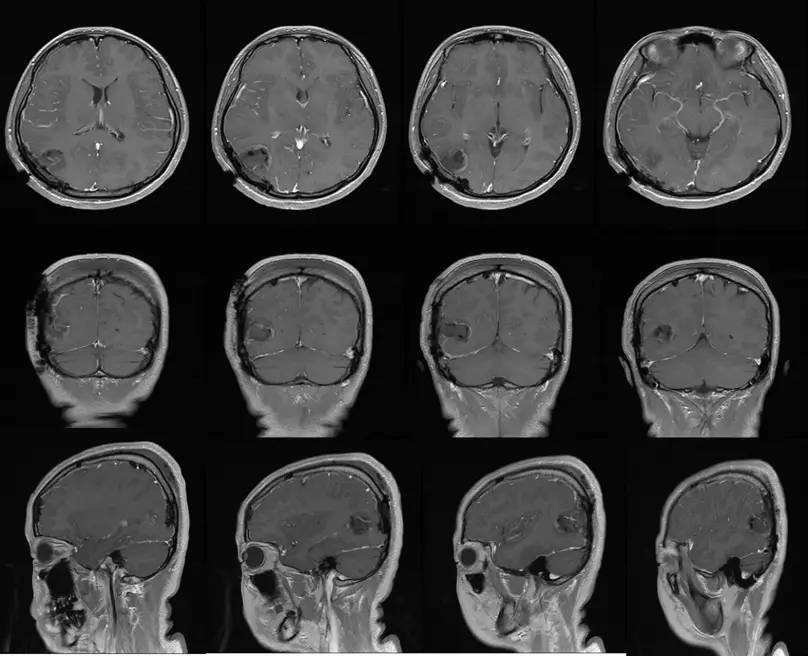
The hydroxyl asiaticoside has a protective effect on hippocampal neurons in mice with chronic aluminum intoxication, thereby improving learning and memory and producing a therapeutic effect in a dementia-like model [38]. Asiatic acid derivatives can antagonize the neurotoxicity produced by β-amyloid [39]. Hydroxyasiaticoside attenuates chronic aluminum toxicity-induced neuronal damage in mouse hippocampus by increasing antioxidant stress, inhibiting neuronal apoptosis, and anti-inflammatory effects [40]. Asiaticoside significantly inhibits NMDA-induced calcium inward flow by down-regulating or partially down-regulating the expression of GluN2B receptor and decreasing the ratio of Bcl-2/Bax, which has a significant protective effect on NMDA-induced neuronal damage [41].
4.2.4 Anti-tumor effects
Tumor is one of the major killers of human life, and how to cure malignant tumors is also a major difficulty in the medical field nowadays.
Some studies have shown that centella asiatica glucoside can induce cell death by changing the ratio of Bax/Bcl-2 and the activity of cysteo asparaginase, which is not dependent on p-53, and has great potential in the treatment of human skin cancer [42]; it can inhibit the synthesis of DNA in tumor cells and thus play a role in the inhibition of oxidized nitrogen oxidation-azobenzene-induced variant cystic foci, which can lead to slowing down of the colonization speed of the tumor cells, and thus achieve the inhibition of cancerous tendency [43]. In this way, tumor cell proliferation can be slowed down and the tendency of carcinogenesis can be inhibited[43]. Asiaticoside can effectively inhibit the proliferation of CNE cells [27].
Hydroxyascorbic acid can inhibit the expression of NF-κB, thereby blocking the NF-κB signaling pathway and promoting tumor cell death. In vitro, it has a strong ability to promote apoptosis of CT26 cells, can enhance the proliferation of T lymphocytes, promote tumor cell death, and promote the regression of transplanted tumors in nude mice [44].
4. 2. 5 Immunomodulation
Centella asiatica contains a variety of chemical components, among which flavonoids have strong antioxidant effects and play a certain immunomodulatory effect. Centella asiatica glycosides combined with rhodopsin can inhibit the local C3 overproduction in the kidney due to the up-regulation of the inflammatory cytokine TNF-α, which can protect renal function and delay the progression of the disease [45]. Hydroxycitrin can down-regulate the immune response of intestinal mucosa in arthritic rats, and promote the formation and maintenance of intestinal mucosal immune tolerance [46].
4. 2. 6 Anti-ulcer, antibacterial, anti-inflammatory and analgesic effects
The effect of Centella asiatica on gastric ulcer has been proved by relevant experiments. Centella asiatica extracts can resist ethanol-induced gastric mucosal damage in mice by enhancing mucosal self-obstruction and reducing free radical damage [47]. The aqueous extract of Centella asiatica reduced the size of acetic acid-induced gastric ulcers, which was accompanied by a decrease in myeloperoxidase activity, epithelial cell proliferation, plasma vasculogenesis, and fibroblast growth in gastric tissues, and treated gastric ulcers [48].
Asiaticoside has strong in vivo and in vitro antimicrobial activity, strong in vitro antimicrobial activity, broad antimicrobial spectrum, especially against a variety of drug-resistant bacteria, including Gluconobacter aureus, Gluconobacter epidermidis, Enterococcus faecalis, Escherichia coli, Klebsiella and Fusobacterium as well as Pseudomonas aeruginosa, etc. [49].
Asiaticoside has analgesic effects on lipopolysaccharide-induced nociceptive sensitization pain in mice injected intraperitoneally, and reduces peroxidase, nitric oxide, and α-tumor necrosis in brain tissue [50].
4. 2. 7 Others
Centella asiatica can regulate the expression of various cytokines and regulate the local immune response of the kidney, thus reducing the damage of renal tissues and slowing down the progression of renal failure [51]. The hypolipidemic and hepatoprotective effects of centella asiatica may be achieved by increasing the expression of LCAT and SR-BI mRNA [52].
4.3 Toxic side effects
At present, there are no studies or reports indicating the toxicity of Centella asiatica extract at commonly used doses, and side effects are rare, but skin irritation and burning sensation (topical application), headache, gastrointestinal discomfort, nausea, dizziness, etc., cannot be excluded in some special cases, and extreme somnolence may also occur at high doses [53]. Subcutaneous injections can cause allergic reactions, resulting in pain at the injection site or discoloration. Side effects are less common with intramuscular injections. Oral overdose of Centella asiatica may cause headache and transient unconsciousness [54]. In addition, there is little evidence that Centella asiatica can be used during breastfeeding, so it is not recommended for use in breastfeeding mothers. During prolonged treatment, especially at higher doses, toxic metabolism of the active ingredient can occur, and based on pharmacokinetic phenomena, it has been suggested that Centella asiatica should be considered for effective and safe pharmacological treatment, and is not recommended to be used for more than 6 consecutive weeks [55].
5 Conclusion
Centella asiatica mainly contains triterpenes and their glycosides and other compounds, with inhibition of scar proliferation, repair of skin damage, antidepressant, neuroprotective, anti-tumor, immune regulation, anti-ulcer, antibacterial, anti-inflammatory and other pharmacological effects, especially in the treatment of skin-related diseases with good efficacy, rich products, and widely used.
Centella asiatica has a wide range of medicinal effects, but not all of them can be effectively transformed into clinical applications. In the course of subsequent research, attention should be paid to realizing the effective application of Centella asiatica in various fields and improving the utilization level of Centella asiatica.
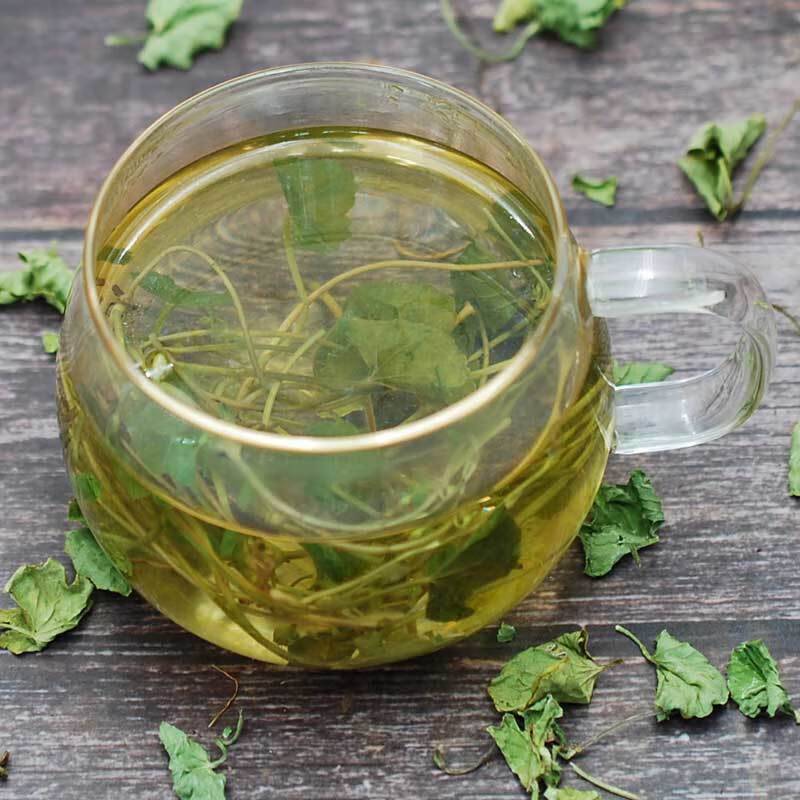
The dried leaves of Centella asiatica can be used as tea, but from the point of view of popularity, the fame of Centella asiatica tea is far less than that of chrysanthemum tea, rattan tea, rooibos tea, barley tea and other different teas, and the commodity form of Centella asiatica tea is relatively single, with a low market share. In China's traditional application, Centella asiatica tea is mostly used as herbal tea. At present, the trade name of Centella asiatica tea in China's market is mainly Lei Gong Root Tea, which is labeled with the efficacy of dispelling wind and removing dampness, soothing the tendons and activating the blood, and killing worms and detoxifying the toxins, and so on. However, Centella as a tea has been inherited from ancient times in the south. Based on the pharmacological effects of Centella asiatica, Centella asiatica tea should have more health care functions, and has great potential for market application, especially in the prevention and treatment of chronic metabolic diseases, neurodegenerative diseases and other aspects worthy of attention and concern.
As the research on the material basis and pharmacological effects of Centella asiatica continues to deepen, the actual development and utilization of Centella asiatica will receive widespread attention, and more related products will be marketed and applied in the pharmaceutical and cosmetic industries, creating a large amount of application value and better serving the public.
References
[1] Dai Baidong, Zhang Cui, Wang Jia, et al. Research status of Centella asiatica[J]. Shanghai Medicine, 2008, 29 (2): 88-91.
[2] Xiao Wei, Liu Yong, Xu Lijia, et al. Tea and health[J]. Chinese Modern Traditional Medicine, 2014, 16( 1): 1-3.
[3] WANG Ming, YUAN Changqi, ZHAO Youyou. Medicinal plants of Europe and the United States [J]. China Wild Plant Resource, 2003, 22(6): 96-97.
[4] State Administration of Traditional Chinese Medicine, Chinese Materia Medica Editorial Committee. Chinese Materia Medica [M]. Shanghai, Shanghai Science and Technology Press, 1999.
[5] Xu Hao. Biological characteristics and utilization value of Centella asiatica[J]. Special Economic Animals and Plants, 2005, ( 8 ): 24-25.
[6] Duan Lisheng. Dai folk medicine of Centella asiatica is used for dietary therapy[J]. Chinese Ethnic Medicine Journal, 2008, (2) : 44.
[7] Chandrika U G, Kumarab PA A S P. Gotu Kola ( Centella asiatica ) : Nutritional Properties and Plausible Health Benefits [J]. 125-157.
[8] Bylka W, Znajdek-Awiz.eń P, Studzińska-Sroka E, et al. Centella asiatica in cosmetology [J].Postepy Dermatol Alergol, 2013, 30( 1) : 46-49.
[9] Brinkhaus B, Lindner M, Schuppan D, et al. Chemical, pharmacological and clinical profile of the East Asian medical plant Centella asiatica[J]. Phytomedicine, 2000, 7 ( 5): 427-448.
[10] European Pharmacopoeia ( Ph. Eur.) [S]. Council of Europe, Strasburg, 2001.
[11] Polish Pharmacopoeia IX [S]. Polish Pharmaceutical Society, Warsaw, 2011.
[12] Cui Wenhua, Liu Guangliang, Li Yaobin. Observation on the efficacy of Centella asiatica in the treatment of burns for pain relief and scar prevention[J]. China Clinical Rehabilitation, 2002, 6( 6) : 839 .
[13] Xin Zhaosheng, Wang Ping. Analysis of the efficacy of Chinese patent medicine Sanjin Tablet in the treatment of urinary tract infection[J]. Chinese Community Physician (Medical Specialty), 2011, 13(1): 106-107.
[14] Yang Zongzheng. Clinical application of Centella asiatica [J]. Jiangsu Traditional Chinese Medicine, 1985, (4) : 40-41.
[15] Siddiqui B S, Aslam H, Ali S T, et al. Chemical constituents of Centella asiatica[J]. J Asian Nat Prod Res, 2007, 9 (4) : 407-414.
[16] Weng Xiaoxiang, Huang Wenwu, Kong Deyun. Research on triterpenoids in Centella asiatica and their pharmacological activities[J]. Chinese Journal of Pharmaceutical Industry, 2011, 42 ( 9 ): 709-716.
[17] Weng Xiaoxiang, Chen Yunyan, Shao Yan, et al. A new triterpene glycoside of arbutin type from Centella asiatica[J]. Chinese Journal of Pharmaceutical Industry, 2011, 42 ( 3): 187-188.
[18] Xiao-Xiang Weng, Jing Zhang, Wen Gao, et al. Two New Pentacyclic Triterpenoids from Centella asiatica [J]. HeIv Chim Acta, 2012, 95 ( 2) : 255-260.
[19] Yan Shao, Dan-Wei Ou-Yang, et al. Three New Pentacyclic Triterpenoids from Centella asiatica [J]. HeIv Chim Acta, 2014, 97 (7) : 992-998 .
[20] Yan Shao , Dan-Wei , Ou-Yang , et al. New Pentacyclic Triterpenoids from Centella asiatica [J]. HeIv Chim Acta, 2015, 98 ( 5) : 683 - 690.
[21] Schulte K E, Ruecker G, Bary E A. Polyacetylenes from Hydrocoty Leasiatica [J]. Arch Pharm, 1973, 306 ( 3 ): 197-209.
[22] Srivastava R , Shukla Y N. Some chemical constituents from Centella asiatica[J]. Idian Durgs, 1996, 33 ( 5) : 233-234.
[23] Srivastava R , Shukal Y N. A disubstituted pyrone from Centella asiatica [J]. Indian Chem , 1997, 36 ( 10 ): 963-964.
[24] Shukla Y N , Srivastava R , Tripathi A K , et al. Charicterization of an Ursane triterpenoid from Centella asiatica with growth inhibitory activity against spilarictia obliqua[J]. Pharm Biol, 2000, 38 (4) : 262-269.
[25] Qin Luping, Ding Ruxian, Zhang Weidong, et al. Analysis of volatile oil composition of Centella asiatica and its antidepressant effect[J]. Journal of the Second Military Medical University, 1998, 19 (2): 186-187.
[26] Oyedeji O A, Afolayan A J. Chemical Composition and Antibacterial Activity of the Essential Oil of Centella asiatica Growing in South Africa[J]. Pharm Biol, 43 ( 3) : 249-252.
[27] Peng Jingyu, Cong Xiaodong, Zhang Yun, et al. Progress of chemical composition and quality control of Centella asiatica[J]. J]. Chinese Ethnic Folk Medicine, 2011, ( 14): 49-50.
[28] ZHANG Tao, RONG Xinzhou, YANG Ronghua, et al. Effects of centella asiatica glycosides on the expression of transforming growth factor-βmRNA and matrix metalloproteinases in proliferative scars[J]. Journal of Southern Medical University, 2006, 26(1): 67-70.
[29] Pan Shu, Li Tianzeng, Qi Shaohai, et al. Effects of Centella asiatica on the proliferation of scar fibroblasts and the expression of phosphorylated Smad2 and Smad7[J]. World Clinical Drugs, 2004, 2 ( 25): 99-102.
[30] Xie Julin, Li Tizen, Qi Shaohai, et al. The effect of asiaticoside on fibroblasts cultured in vitro[J]. Journal of Zhongshan Medical University, 2001, 22 (1): 41-47.
[31] Tang Li-xia, Yang Guang, Tan Jiaju. Inhibition of type I collagen expression in HSC-T6 cells by cumaric acid[J]. Journal of the Fourth Military Medical University, 2007, 28 (13): 1178-1180.
[32] Ouyang Danwei, Shao Yan, Kong Deyun, et al. Inhibitory effect of total glycosides of Centella asiatica and its chemical components on the proliferation of scar fibroblasts[J]. World Clinical Drugs, 2014, 35 (4) : 215-220.
[33] Zhang T, Li TZ, Qi SH, et al. The effect of centella asiatica glucoside on the expression of cell cycle protein and proliferating cell nuclear antigen in burn wound healing[J]. Chinese Journal of Experimental Surgery, 2005, 22 ( 1): 41.
[34] Lu Luo, Ying Kang, Wei Shaomin, et al. The effect of centella asiatica glycosides on collagen-related genes in fibroblasts[J]. Daily Chemical Industry, 2004, 34 ( 6 ): 344-346.
[35] Zhang Zhongqi, Yuan Li, Luo Qipu. Inhibition of brain monoamine oxidase A activity by Centella asiatica extract in mice in vitro[J]. Proceedings of the Academy of Military Medical Sciences, 2000, 24 ( 2): 158.
[36] Zeng Yuwei, Li Yan, Yi Jia. Preliminary study on the mechanism of antidepressant effect of total glycosides of Centella asiatica[J]. Journal of Pharmacy of the People's Liberation Army, 2009, 25 ( 1): 40-43.
[37] Liu Yingju, Kobayashi Yuta, Li Songhua, et al. Therapeutic effects of hydroxylated Centella asiatica glycosides in transgenic amyotrophic lateral sclerosis mice[J]. Chinese Herbal Medicine, 2006, 37 ( 5 ): 718-721.
[38] Sun Feng, Liu Yingju, Xiao Xiaohua, et al. Therapeutic effect of hydroxyl cumquatoside on chronic aluminum intoxication in demented mice[J]. Chinese Journal of Gerontology, 2006, 26 (10): 1363-1365.
[39] Jew S, Yoo C D, Kim H, et al. Structure-activity relationshi Pstudy of asiatic acid derivatives against beta amyloid ( A beta)-induced neurotoxicity [J]. [J]. Bioorg Med Chem Lett, 2000, 10(2) : 119-121.
[40] Bai Jiru, Liu Yingju, Song Yun. Study on the mechanism of neuronal degeneration intervened by hydroxycitrin[J]. Chinese Journal of Gerontology, 2008, 23 ( 28 ): 2297-2300.
[41] Qi Fengyan. Research on the protective effect of Centella asiatica glycosides on NMDA-induced excitatory neurotoxicity and its mechanism[D]. Fourth Military Medical University, 2014.
[42] Park B C, Bosire K O, Lee E S, et al. Asiatic acid induces apoptosis in SK-MEL-2 human melanoma cells[J]. Cancer Lett, 2005, 218 ( 1) : 81-90 .
[43] Bunpo P,Kataoka K,Arimochi H,et al. Inhibitory effects of Centella asiatica on azoxymethane-induced aberrant crypt focus formation and carcinogenesis in the intestines of F344 rats[J].Food Chem Toxicol, 2004, 42 ( 12) : 1987-1997.
[Food Chem Toxicol, 2004, 42 ( 12 ) : 1987-1997. Induction of apoptosis in colon cancer cells via immunomodulation and NF-kB pathway by hydroxyjacksonic acid [D]. Wuhan University, 2014.
[45] Zhu Xiaoling, Wang Yongjun, Zhang Yinghua, et al. Effects of cumulus humilis glycosides and rhodopsin on tumor necrosis factor α-induced C3 expression in renal mesangial cells[J]. Chinese Clinical Pharmacology and Therapeutics, 2006, 11 (4): 414-417.
[46] Wang Ting, Wei ZF, Dou YN, et al. Effects of hydroxyl cumquatoside on intestinal mucosal immunity in rats with collagen arthritis[J]. Chinese medicinal herbs, 2015, 38 ( 2 ): 333-338.
[47] Cheng C L, Koo M W. Effects of Centella asiatica on ethanol induced gastric mucosal lesions in rats[J]. Life Sci, 2000, 67 ( 21) : 2647-2653.
[48] Chuen L C, Jin S G, John L, et al. The healing effects of Centella extract and asiaticoside on acetic acid induced gastric ulcers in rats[J]. Life Sci. Life Sci. 2004, 74 ( 18 ): 2237-2249.
[49] Zhang Shenghua, Yu Lanxiang, Xu Xiandong, et al. Antimicrobial effect of Centella asiatica glycosides and its therapeutic effect on experimental urinary tract infection in mice[J]. Chinese New Drugs Journal, 2006, 15 ( 20) : 1746-1749.
[50] CHEN Yao, HAN Ting, QIN Luping, et al. Effects of centella asiatica glycosides on depressive behavior and amino acid content in the brain of mice[J]. Chinese Materia Medica, 2003, 26(12): 870-872.
[51] Zhao Wangzhi, Zhu Xiaoling. Research on the prevention and treatment of renal fibrosis by Centella asiatica and its compound formula[J]. Journal of Changchun University of Traditional Chinese Medicine, 2014, 30(2): 227-229.
[52] Lin Li-Min. Study on lipid regulation and hepatoprotective effect of Centella asiatica acid on hyperlipidemic animals [D]. Xiamen University, 2014.
[53] Eun H C, Lee A Y. Contact dermatitis due to madecassol[J]. Contact Dermatitis, 1985, 13 : 310-313 .
[54] Dutta T, Basu U P. Crude extract of Centella asiatica and products derived from its glycosides as oral antiferility agents[J]. Indian J Ex PBiol, 1968 Indian J Ex PBiol, 1968, 6 : 181.
[55] Gohil K J. Pharmacological Review on Centella asiatica : A Potential Herbal Cure-all[J]. Indian J Pharm Sci, 2010, 72 ( 5) : 546-556 .


 English
English French
French Spanish
Spanish Russian
Russian Korean
Korean Japanese
Japanese